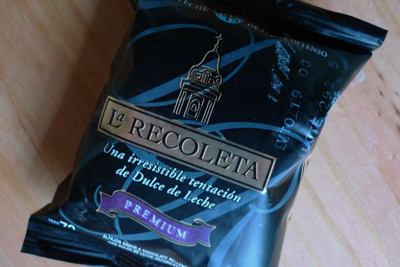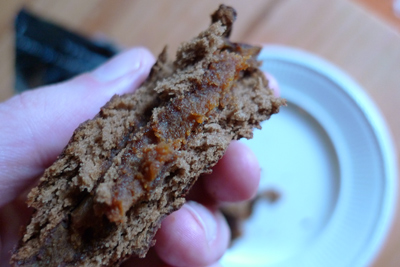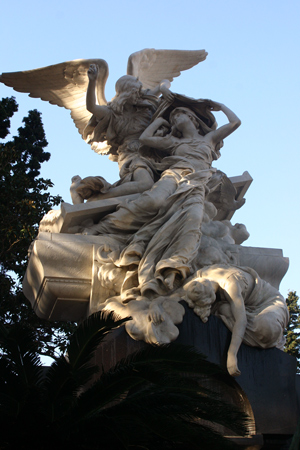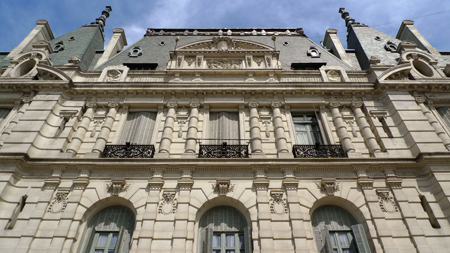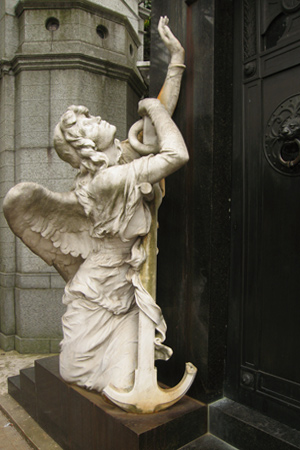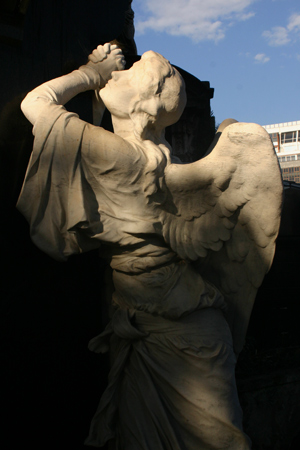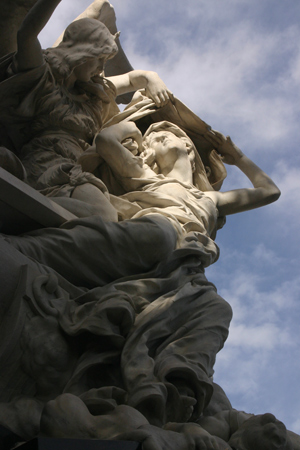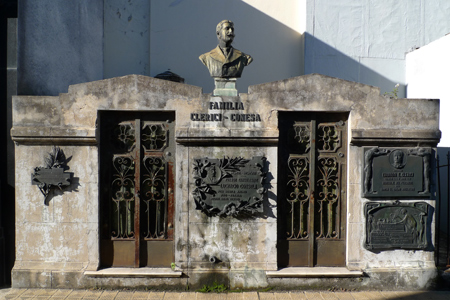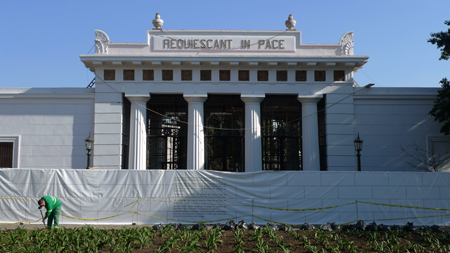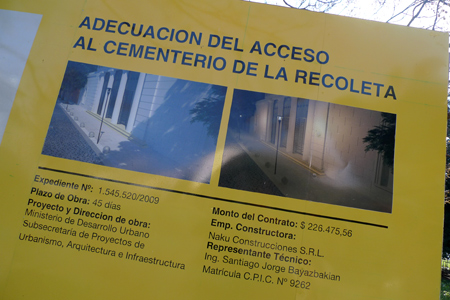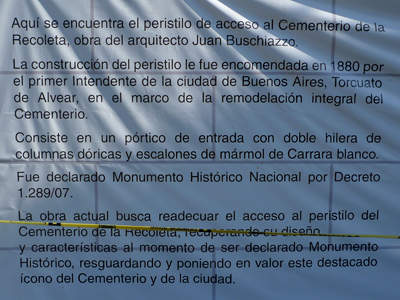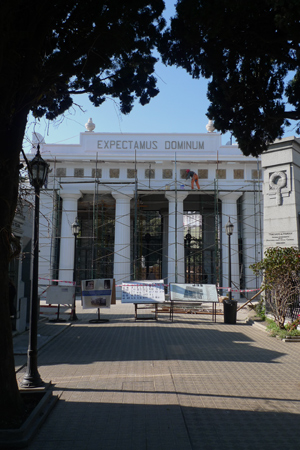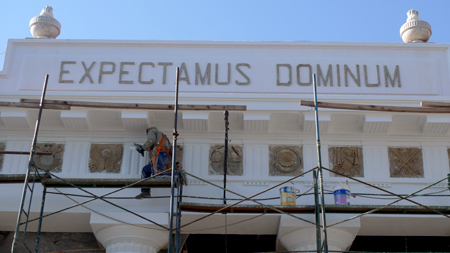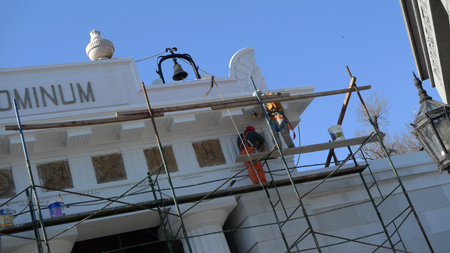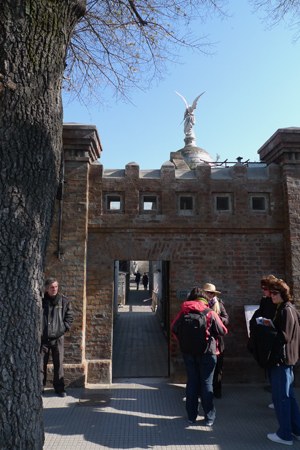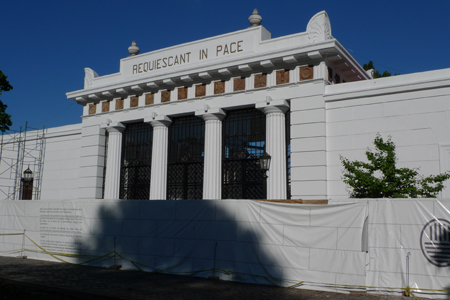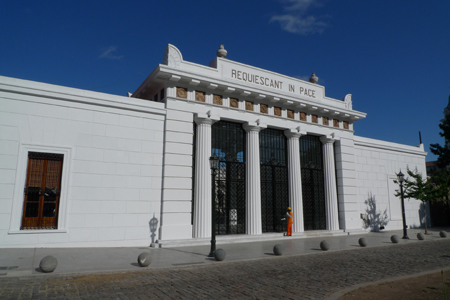
An artisanal restoration for Recoleta Cemetery
The façade & principal building have been recovered. And an unused entrance on Junín Street has opened.
By Romina Smith
THE MAIN ENTRANCE AND ITS NEW LOOK.
It occupies a little more tan five hectares, but in its vaults, mausoleums and streets the nation’s history can be summed up. Today, Recoleta Cemetery receives 500,000 tourists per year & this interest, added to the value of its architecture and history, makes it one of the three most important in the world, along with Pére Lachaise in Paris and Staglieno in Genoa. As of this week, the façade & the cemetery’s main building sport a complete & rigorous restoration. Works lasted for more than 10 months and were done as artisanal as possible, with specialist restoration experts & architects.
“The works were based, above all else, in the refit and recovery of the main building, where there were issues with humidity, among other damage caused by the passage of time. The façade was restored, the chapel, the main access and administration offices, whose walls face Junín & Vicente López, even an old entrance on that last street which was in poor condition was restored so that it looks as it was originally built… even the bell was restored,” explained architect Antonio Costantino, head of the Department of Works of the General Office of Cemeteries.
A variety of works of art were also highlighted. Works were carried out by the Ministry of Public Space with the collaboration of various entities, such as the Department of Historical Heritage, the Department of Urban Interpretation, the National Commission of Museums, Monuments & Historic Places, among others. A total sum of $2,200,000 pesos was invested.
Present for the unveiling of the works was mayor Mauricio Macri, the Minister of Public Space, Diego Santilli & local residents. “In this cemetery lie several of our best men & women, as well as the loved ones of many locals,” expressed Santilli. “For that reason we decided, after eight years without any project, to invest in order to revitalize it,” he added.
The cemetery, unique for its architectural variety—which parallels that of the city of Buenos Aires according to the architect Costantino—was inaugurated in 1822. The principal entrance can be found at Junín 1760 and more than 70 vaults have been declared National Historic Monuments. The most visited, say the caretakers, is the tomb of Eva Perón, who has rested in peace here since 1976 after her embalmed cadaver’s long journey.
But there are also other historic personalities, like Manuel Dorrego & his enemy, General Juan Lavalle, the caudillo from La Rioja province Facundo Quiroga and his rival, Domingo Faustino Sarmiento, Nobel Prize winner Luis Leloir and even the ghost of Rufina Cambaceres… an urban legend which is repeatedly told in every visit.
Addendum by Robert: Unfortunately the media version does not tell the whole story. Read about the staircase destruction first, then the rain damage, followed by the restoration process.
